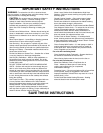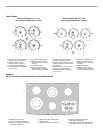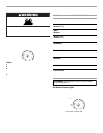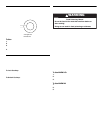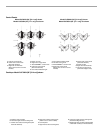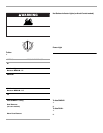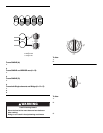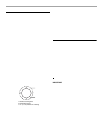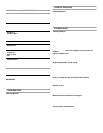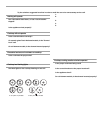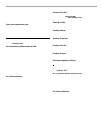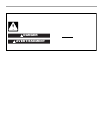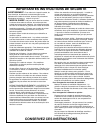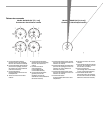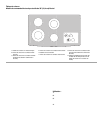
11
Use the following chart as a guide for cookware material
characteristics.
COOKTOP CARE
General Cleaning
IMPORTANT: Before cleaning, make sure all controls are off and
the oven and cooktop are cool. Always follow label instructions
on cleaning products.
Soap, water and a soft cloth or sponge are suggested first unless
otherwise noted.
STAINLESS STEEL (on some models)
Cleaning Method:
Rub in direction of grain to avoid damaging.
■ Stainless Steel Cleaner & Polish Part Number 31462 (not
included):
See “Assistance or Service” section to order.
■ Liquid detergent or all-purpose cleaner: Rinse with clean
water and dry with soft, lint-free cloth.
■ Vinegar for hard water spots.
Do not use soap-filled scouring pads, abrasive cleaners, Cooktop
Polishing Creme, steel-wool pads, gritty washcloths or some
paper towels. Damage may occur.
COOKTOP CONTROLS
Cleaning Method:
When replacing knobs, make sure knobs are in the Off position.
On some models, do not remove seals under knobs.
■ Soap and water or dishwasher:
Pull knobs straight away from control panel to remove.
Do not use steel wool, abrasive cleansers or oven cleaner.
Do not soak knobs.
CERAMIC GLASS
Cleaning Method:
Always wipe with a clean, wet cloth or sponge and dry thoroughly
to avert streaking and staining.
Cooktop Cleaner Part Number 31464 is recommended for regular
use to help avert scratches, pitting and abrasions, and to
condition the cooktop. It may be ordered as an accessory. See
“Assistance or Service” section to order.
Cooktop Scraper Part Number 3183488 is also recommended for
stubborn soils, and can be ordered as an accessory. See
“Assistance or Service” section to order. The Cooktop Scraper
uses razor blades. Store razor blades out of the reach of
children.
Light to moderate soil
■ Paper towels or clean damp sponge:
Clean while the cooktop is still warm. You may want to wear
oven mitts while doing so.
Sugary spills (jellies, candy, syrup)
■ Cooktop Scraper:
Clean while the cooktop is still warm. You may want to wear
oven mitts while doing so.
■ Cooktop Polishing Creme and clean damp paper towel:
Clean as soon as cooktop has cooled down. Rub creme into
surface with a damp paper towel or soft cloth. Continue
rubbing until white film disappears.
Heavy soil, dark streaks, specks and discoloration
■ Cooktop Polishing Creme or nonabrasive cleanser:
Rub product into soil with a damp paper towel or soft cloth.
Continue rubbing until white film disappears.
Burned-on soil
■ Cooktop Polishing Creme and Cooktop Scraper:
Rub creme into soil with damp paper towel. Hold scraper as
flat as possible on surface and scrape. Repeat for stubborn
spots. Polish entire cooktop with creme and paper towel.
Metal marks from aluminum and copper
■ Cooktop Polishing Creme:
Clean as soon as cooktop has cooled down. Rub creme into
surface with a damp paper towel or soft cloth. Continue
rubbing until white film disappears. The marks will not totally
disappear but after many cleanings become less noticeable.
Tiny scratches and abrasions
■ Cooktop Polishing Creme:
Rub creme into surface with a damp paper towel or soft
cloth. Continue rubbing until white film disappears. Scratches
and abrasions do not affect cooking performance and after
many cleanings become less noticeable.
Do not use steel wool, abrasive powder cleansers, chlorine
bleach, rust remover or ammonia because damage may occur.
COOKWARE CHARACTERISTICS
Aluminum
■ Heats quickly and evenly.
■ Suitable for all types of cooking.
■ Medium or heavy thickness is best for
most cooking tasks.
Cast iron
■ Heats slowly and evenly.
■ Good for browning and frying.
■ Maintains heat for slow cooking.
Ceramic or
Ceramic glass
■ Follow manufacturer’s instructions.
■ Heats slowly, but unevenly.
■ Ideal results on low to medium heat
settings.
Copper
■ Heats very quickly and evenly.
Earthenware
■ Follow manufacturer’s instructions.
■ Use on low heat settings.
Porcelain
enamel-on-
steel or cast
iron
■ See stainless steel or cast iron.
Stainless steel
■ Heats quickly, but unevenly.
■ A core or base of aluminum or copper
on stainless steel provides even
heating.



